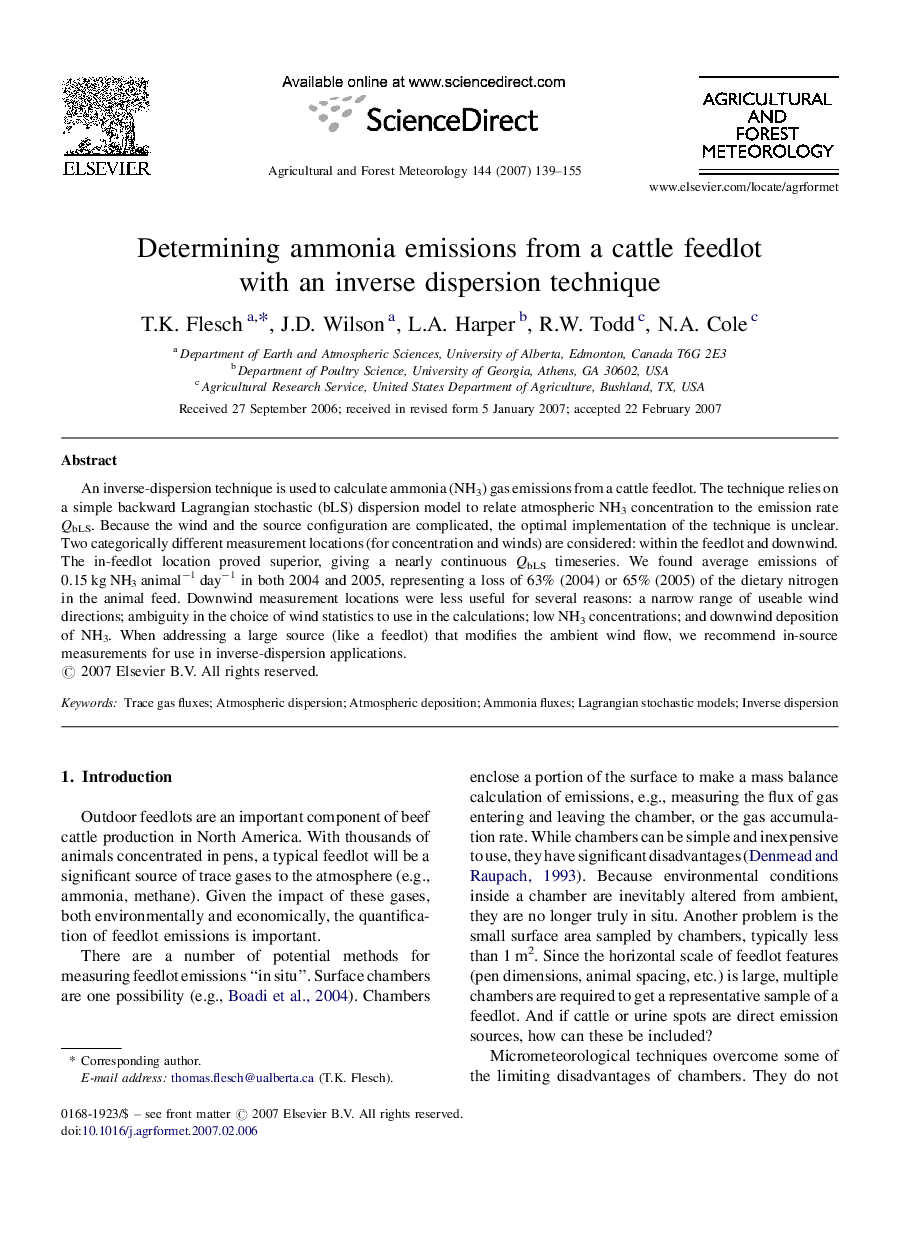| Article ID | Journal | Published Year | Pages | File Type |
|---|---|---|---|---|
| 82816 | Agricultural and Forest Meteorology | 2007 | 17 Pages |
An inverse-dispersion technique is used to calculate ammonia (NH3) gas emissions from a cattle feedlot. The technique relies on a simple backward Lagrangian stochastic (bLS) dispersion model to relate atmospheric NH3 concentration to the emission rate QbLS. Because the wind and the source configuration are complicated, the optimal implementation of the technique is unclear. Two categorically different measurement locations (for concentration and winds) are considered: within the feedlot and downwind. The in-feedlot location proved superior, giving a nearly continuous QbLS timeseries. We found average emissions of 0.15 kg NH3 animal−1 day−1 in both 2004 and 2005, representing a loss of 63% (2004) or 65% (2005) of the dietary nitrogen in the animal feed. Downwind measurement locations were less useful for several reasons: a narrow range of useable wind directions; ambiguity in the choice of wind statistics to use in the calculations; low NH3 concentrations; and downwind deposition of NH3. When addressing a large source (like a feedlot) that modifies the ambient wind flow, we recommend in-source measurements for use in inverse-dispersion applications.
